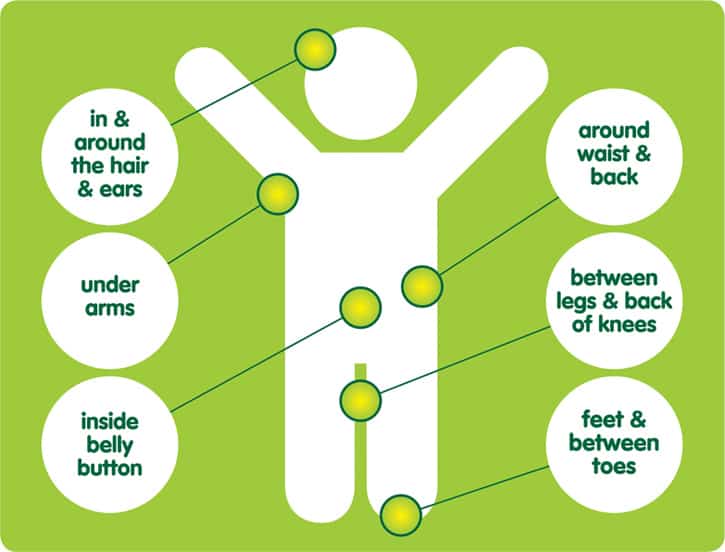Removing a Tick
![]()
 Most ticks do not carry diseases, and most tick bites do not cause serious health problems. But it is important to avoid and check for ticks, and to remove a tick as soon as you find it. Removing the tick completely may help you avoid diseases such as Lyme disease that the tick may pass on during feeding, or a skin infection where the tick bit you.
Most ticks do not carry diseases, and most tick bites do not cause serious health problems. But it is important to avoid and check for ticks, and to remove a tick as soon as you find it. Removing the tick completely may help you avoid diseases such as Lyme disease that the tick may pass on during feeding, or a skin infection where the tick bit you.
Avoid folklore remedies such as “painting” the tick with nail polish or petroleum jelly, or using heat to make the tick detach from the skin. Your goal is to remove the tick as quickly as possible–not waiting for it to detach. Studies done on these “folklore remedies” have shown that ticks actually attach themselves with greater determination rather than backing out. Often times, these methods also make the tick vomit into the bite site, thereby giving the host (you) whatever potential viruses or diseases they may be carrying.
Our staff have tried over a dozen supposed “foolproof methods” for tick removal, and the two most effective methods have been to use a Tick Twister Pro (shown at right), or simply by using needle-nose tweezers that allow you to grab even poppy-seed sized nymphs close to the skin.
Even if the hypostome (the mouth part that is buried deep inside the hosts’ tissue) breaks, the germs that can make you sick are further back in the tick’s body, in the salivary glands and gut. That’s not to say that the area cannot become infected however. Be sure to thoroughly clean and disinfect the site of any removed tick bite.
Prevention
![]()
Reducing exposure to ticks is the best defense against Lyme disease, Rocky Mountain spotted fever, and other tick-borne infections. There are several approaches you and your family can use to prevent and control Lyme disease:
- While it is a good idea to take preventive measures against ticks year-round, be extra vigilant in warmer months (April-September) when ticks are most active.
- Avoid direct contact with ticks by avoiding wooded and bushy areas with high grass and leaf litter. Always walk in the center of trails when possible.
- Repel ticks with DEET or permethrin. Use repellents that contain at least 20-30% DEET (N, N-diethyl-m-toluamide) on exposed skin and clothing for protection that lasts up to several hours. Always follow product instructions.
- Permethrin should only be applied to clothing. Treat clothing and gear, such as boots, pants, socks and tents with products containing 0.5% permethrin. It remains protective through several washings. Pre-treated clothing is available and may be protective longer. Other repellents registered by the EPA may be found online at https://cfpub.epa.gov/oppref/insect.
When Checking for Ticks, Remember To:
- When you come in from outdoors, check all over your body for ticks, including your groin, head, and underarms. Comb your hair with a fine-toothed comb, or have someone check your scalp.
- To remove ticks from clothing, put your clothes in a hot dryer or hang them out in the sun on a hot day for at least 15 minutes. The heat can kill the ticks. Also check for ticks on any gear you had with you in the woods.
- Check your children daily for ticks, especially during the summer months.
- Check your pets for ticks after they’ve been outdoors. Your pets can carry infected ticks indoors where they might fall off your pet and attach to you.


![]()
![]()
If you find a deer tick on yourself or a loved one, SAVE IT and get it tested for Lyme Disease! It’s much faster and more accurate than getting a person tested.





Comments are closed.